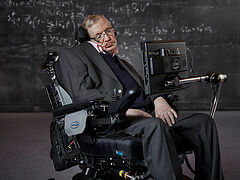This topic is very complex, so rather than explaining what time is, this article simply outlines the related problems and invites the reader to contemplate and discuss this issue.
Alice sighed wearily. “I think you might do something better with the time,” she said, “than waste it in asking riddles that have no answers.”
“If you knew Time as well as I do,” said the Hatter, “you wouldn’t talk about wasting it. It’s him.”
“I don’t know what you mean,” said Alice.
“Of course you don’t!” the Hatter said, tossing his head contemptuously. “I dare say you never even spoke to Time!”
“Perhaps not,” Alice cautiously replied: “but I know I have to beat time when I learn music.”
“Ah! that accounts for it,” said the Hatter. “He won’t stand beating. Now, if you only kept on good terms with him, he’d do almost anything you liked with the clock. For instance, suppose it were nine o’clock in the morning, just time to begin lessons: You’d only have to whisper a hint to Time, and round goes the clock in a twinkling! Half-past one, time for dinner!”
“That would be grand, certainly,” said Alice thoughtfully, “but then—I shouldn’t be hungry for it, you know.”
“Not at first, perhaps,” said the Hatter, “but you could keep it to half-past one as long as you liked.”
Alice In Wonderland, Lewis Carrol
Lewis Carrol metaphorically describes Time as a living being that you can talk to or persuade to hurry up, slow down or stop altogether. From the Christian standpoint, God, as a Living Personality, created time, wisely endowing it with quite curious properties, some of which science is just beginning to discover, though unable to rationally understand the nature of time.
***
There are two opinions about time:
Supporters of the first opinion believe that time is not associated with any actually existing dimensions and that it is simply a notional concept that allows people to follow, compare and organize events. This point of view was supported by the idealist philosophers like Augustine, Kant and Mach. Gottfried Leibniz, a scientist, shared this belief, stating that the physical world, space and time are perceived subjectively and represent an imperfect sensory reproduction of the real world of indivisible basic entities called monads.1
According to a different point of view that was most clearly expressed by Newton, space and time are absolute; they are objective and totally independent of both each other and the matter that is developing in them. Space is Euclidean and three dimensional; it is infinite, static and the same everywhere. In other words, it is homogeneous and isotropic[2]2. It exists even when it contains no physical objects. In essence, it is an empty storage where objects move (and fields change), which doesn’t entail the change in its properties. Time is infinite, flowing evenly in one direction from past to present and future, even in the absence of any matter. It is the same in the entire boundless Universe. Flowing constantly in all areas of the world, it is homogeneous and independent of any physical processes.
1. Time in the Theory of Relativity
Developing his theory of relativity, Einstein reached the conclusion that matter, space and time cannot exist independently as they are simply relative aspects of a single whole. For example, the flow of time as well as size and mass of objects depend on their movement, as. at sublight speed, time slows down, mass increases and objects grow smaller. Similarly, the structure (i.e. geometry) of four-dimensional time-space continuum3 changes depending on the accumulation of the object’s mass and the gravity field generated by it. In the proximity of large objects space is distorted and time slows down considerably. According to Einstein, the idea of space and time cannot come to light if there is no matter, and if such matter is not developing or is not perceived by man. In this sense, one can say that if it weren’t for matter, space and time wouldn’t have existed. Matter is constantly moving, and such movement can only be determined in relation to various reference points, hence such movement is relative.
One can say that if it weren’t for matter, space and time wouldn’t have existed.
The theory postulates that time flows differently in a static system and in a system that is evenly moving relative to the observer. The experiments conducted in the last several decades proved that non-stable particles live longer when they move at higher speeds. At sublight speed, their lifespan increases without restrictions. The slowing down of time was also measured by cesium atomic clocks that were installed on airplanes. These clocks were synchronized with similar chronometers in a land-based laboratory. Upon completion of the flight the scientists established that the difference between the time measurements matched the estimated values.
The gravitational field causes distortion of time-space, resulting in an expansion of events. It was discovered that a clock on the sea shore is slower than a clock high in the mountains because the former is closer to Earth's center of gravity. Similarly, in the vicinity of a black hole the time lag would be quite noticeable. If we used a powerful telescope to observe a cosmonaut on an orbital station in close proximity to a black hole’s event horizon,4 it would seem to us that the astronaut is moving in slow motion, while the cosmonaut (who is observing us) would think that we’re moving at a lightning speed. Paradoxically, the time at the cosmonaut’s space station would be flowing at the same rate as it does for us, but he would see that the stars and planets are moving along their orbits at very high speeds, and as a result, the universe would be getting old before his eyes at mind-boggling speed.
If we ask which clock shows the correct time, ours or the astronaut’s, the answer would be: “both are correct within their own timeframes”. It is impossible to determine the “exact level” of time as everything depends on our location with respect to the gravitational field.
2. Time travel
In Newtonian classical physics, time is likened to an arrow evenly flying in one direction, from the past to the present and future. According to Einstein’s theory, time is like a river that flows faster at one moment and slower at the other as it meanders in the distorted space of the Universe. The great scientist worried, though, that there may be hidden whirlpools or forks that can disrupt the river’s unidirectional flow. His concerns were confirmed in 1937 when Willem Jakob van Stockum found the solution for the equation of the General Theory of Relativity, which allowed the possibility of returning to the past. Later on, such scientists as Kurt Gödel, Kip Thorne, John Richard Gott and others continued to develop the idea of time travel. However, their projects are still impossible to implement as they require tremendous amounts of negative matter and energy, “cosmic strings” with colossal mass and sublight speed, and so on.5
In Newtonian physics, time is likened to an arrow evenly flying in one direction, from the past to the present and future. According to Einstein’s theory, time is like a river that flows faster at one moment and slower at the other.
From the scientific standpoint, “going back to the future” is possible, and it has been empirically proven thousands of times. In his Fundamental Physics,6 Jay Orear describes the following relativistic example (the “twin paradox”). One of the two 20-year-old twin brothers flies on a spaceship to a nearby star. If the ship is moving at a sublight speed, it can reach that star and return to Earth in ten years (in terms of the time on the ship). When he returns, he finds out that eighty years have passed on Earth and his twin brother is almost a hundred years old, while he himself is only thirty. Thus, he has travelled seventy years into the future. (Our cosmonauts indeed time-travel for a short period of time every time they return to Earth – the onboard clock shows that they are a few fractions of a second younger compared to what would have happened had they stayed on Earth).
Let us briefly mention several paradoxes that may occur if we travel to the past and disrupt the chronological cause-and-effect relationship:
-
a) “The grandfather paradox”. You time-travel 40-50 years to the past and accidentally run over a boy who would have become your grandfather. His death makes the birth of one of your parents impossible, so your existence is inexplicable.
-
b) “knowledge from the future” (information paradox). Michael Dummett, a philosopher from Oxford, offers a theory about a talentless painter who sees his yet unpainted pictures in a book brought by an art connoisseur from the future. The painter manages to steal the book and copy the pictures, thereby creating masterpieces for the future generations. This means that the information about the paintings has no origin.
-
c) “Deceiver’s paradox”. You invent a time machine that takes you to the future. There, you find out that you’re married to a woman named Christina. Now you know what will happen to you if you marry her, so when you return, you decide to many another woman. Thus you “deceive” the future, avoiding the undesirable events that now have no chance of happening.
In 1992, Stephen Hawking put forward a hypothesis about the “chronology protection” according to which time travel wasn’t possible as it violated certain principles of physics. His arguments, however, were refuted by Sergey Krasnikov and Li-Xin Li who stated that “there was no law of physics that ruled out the formation of closed time-like curves”.7Still, such adepts of chronology protection as Igor Novikov and Matt Visser insist that such a law will be discovered when “a comprehensive theory of quantum gravitation” is developed.
Stephen Hawking put forward a hypothesis about the “chronology protection” according to which time travel wasn’t possible.
There are two (or three to be exact) objections to time travel. Imagine that Einstein’s great-great-great grandson decides to visit him. After the genius scientist’s death, the atoms of his body had dissipated into nature—into the soil, water, air, living creatures, etc. But through some fortunate series of events, thousands of years later the whirlwind of substance resulted in those very atoms forming the body of Einstein’s descendant. If they meet, the same atoms would have to be present simultaneously in two places at once,8 which means that time travel violates the law of conservation of mass/energy (which obviously is the very law that rules out time travel!)
When this great-grandson gets into the time machine and decides to travel, he would simultaneously travel to the past and the future (since every second after the launch is doubtlessly in the future). This results in a logical absurdity, and such a significant internal contradiction in a theory is not very good evidence of its soundness.9
If we consider things literally, wouldn’t it mean that the events of his life should be rewound backwards? That is, the traveler should return to the moment before the launch, then to his adulthood, childhood, birth, etc. In other words, the trip would end right after it started.
3. Other Time-Related Peculiarities
As a result of limited speed of light, the same event can be in the past for one person, in the present for another, and even in the future for a yet another observer. Let us imagine that we live in 2175 and that our civilization had managed to colonize Mars and Jupiter’s largest moon, Ganymede. An interesting soccer match is being played on Earth, and it is being broadcast via satellite to the people’s settlements in space. It takes approximately four minutes for the signal to arrive at Mars, and almost half an hour to reach Ganymede.10 The match has been going on for fifteen minutes, and one team scored on the eleventh minute. The happy fans in the bleachers on Earth have already calmed down when the Martian fans shout with joy, while Ganymedean fans have to wait another 27 minutes to enjoy the spectacular goal.
A phenomenon in physics known as “quantum attachment (correlation)11 involves two particles exchanging “signals” that are possibly transmitted at an infinitely high speed.12 If at some point we learn how to broadcast events at such a speed, the viewers on Mars, Ganymede and anywhere in the Universe would be able to watch soccer games in real time.13 But even then we would be unable to see the future or to learn about something that hasn’t happened yet. For example, it is unlikely that anybody could predict that on the forty-third minute one of the police dogs guarding the stadium would get off its leash and run into the field to chase the ball.
Scientists assert that virtual particles14 are moving perpendicular to time; that is, they can change their position even if time stops. Moreover, cause and effect relationships cannot be clearly established in quantum physics, and according to some provisions of the theory of relativity, the effect can precede the cause. Richard Feynman explained the opposite qualities of anti-particles and particles, suggesting that they may be travelling in time in different directions with respect to each other. For example, a positron is viewed as an equivalent of an electron that comes from the future.15
According to some provisions of the theory of relativity, the effect can precede the cause.
The laws of physics are temporally symmetrical, i.e., the possibility of returning to the past from the future is not ruled out. That is why it is still impossible to explain the unidirectional movement of the “arrow of time”. The most serious (albeit insufficient) argument explaining this problem is the second principle of thermodynamics.16
The authors of The Grand Design do not express a clear opinion on the issues of the origins of time and the Universe.
So far, none of the pillars of the modern physics—neither General Theory of Relativity, nor quantum mechanics, not even the string theory—have been able to explain the existence of space and time.
As far as the second issue is concerned, Stephen Hawking and Jim Hartle in one of their works introduce the concept of so-called “virtual time” wherein “the difference between space and time completely disappears” (they put this idea forward in 1982 and later restated it in the Grand Design). According to this theory, space-time may be finite in terms of length, while the Universe has no beginning or end, as at these points in time singularities disappear. (In 2015, the joint publication of A.F. Ali and S. Das also stated this position based on the quantum physics equations17).
However, as Hawking himself admits, this statement is hypothetical:
“I must note that the idea of time and space being finite but having no boundaries is just an assumption as it cannot be derived from any other principle.”
That is why it is easy to guess that he uses this approach only to arrive at the following conclusion:
“So long as the universe had a beginning, we could suppose it had a creator. But if the universe is really completely self-contained, having no boundary or edge, it would have neither beginning nor end: it would simply be. What place, then, would there be for a creator?”18
However, just recently a group of scientists led by Jean-Luc Lehners and including Job Feldbrugge and Neil Turok successfully applied considerably more robust mathematical methods and techniques to prove that Hawking and Hartle’s “limitless” model was untenable (they also disproved Vilenkin’s so-called “tunnelling” concept that also rules out the possibility of the beginning of time)!19
4. The age of Earth, the Solar System and the Universe
Geologists use several basic methods to determine the absolute age or rocks by way of radioactive dating. Depending on the type of decay and the resulting products, these methods are classified as uranium-lead dating, rubidium-strontium dating, and potassium-argon dating. The half-lives are as follows:
-
Uranium (U235) → Helium (He) + Lead (Pb207) = 700 million years;
-
Potassium (K40) → Argon (Ar40) = 1.3 billion years;
-
Uranium (U238) → Helium (He) + Lead (Pb206) = 4.5 billion years;
-
Rubidium (Rb87) → Strontium (Sr87) = 48.8 billion years.
The source radioactive element decays into a stable final product, which allows for creating a mathematical expression to calculate the geological age. According to the most recent calculations, Earth has existed for at least 4.54 billion years.
The current ratio of two long-lived isotopes of Uranium (U235 and U238) and measured ratios of the products of their decay allowed us to determine that the age of the solar system is approximately 5 billion years. Comparing the mass and brightness of the Sun to those of other stars, one can conclude that this estimate is accurate. The age of calcium and aluminum rich inclusions, the oldest known components of meteorites that were formed at the same time as the solar system, is approximately 4.56 billion years. This is considered to be the actual age of the solar system and the upper limit of the age of Earth.
According to the data on accelerated expansion of the Universe obtained by observing Ia-type supernovas and measuring the spectrum and anisotropy of relict radiation made by WMAP satellite, the age of the Universe is 13.7 ± 0.2 billion years.
To be continued…





